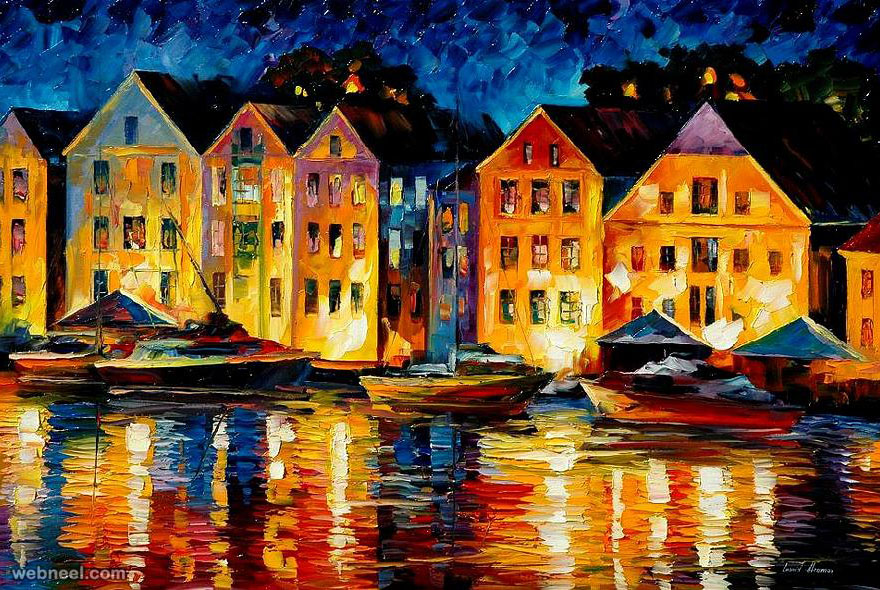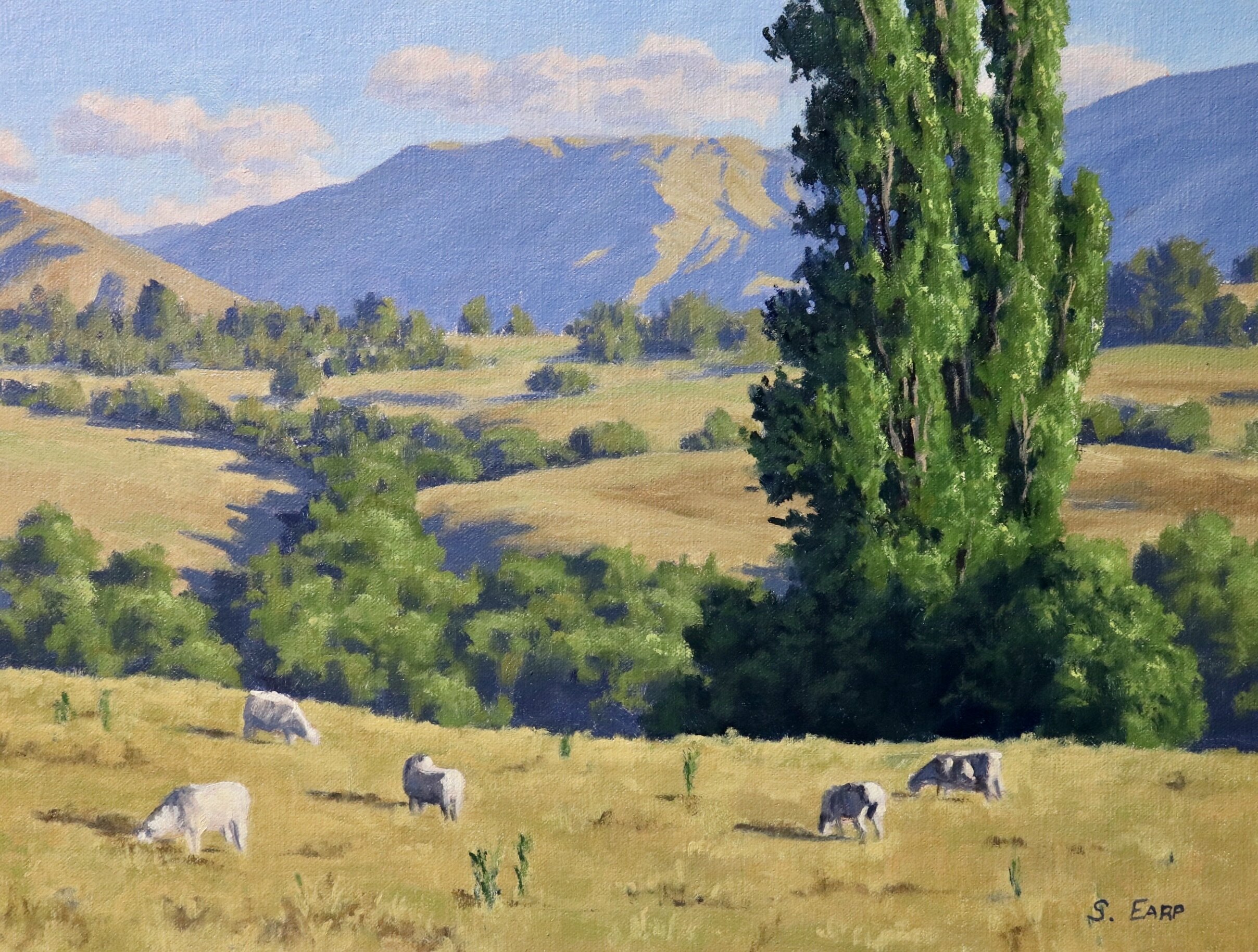Frequently Refreshed Collection of Oil Paintings for Sale
Frequently Refreshed Collection of Oil Paintings for Sale
Blog Article
Checking out Everything About Oil Paints: A Guide to Comprehending Their Elegance and Value
Oil paints have actually captivated audiences for centuries, providing a peek into the artistic mastery of numerous eras. Their abundant history is intertwined with innovative techniques and extensive psychological expression. Recognizing the products and techniques behind these art work can boost admiration. In addition, the market for oil paintings presents opportunities for enthusiasts and capitalists alike. As one discovers this interesting world, the question emerges: what makes an oil paint really important?
The History of Oil Painting: A Trip With Time
Oil paint has roots that date back to old times, it genuinely flourished throughout the Renaissance, when musicians uncovered its flexibility and rich color possibility. Early instances can be traced to the 7th century, with techniques evolving especially across societies. The medium ended up being prominent in Northern Europe in the 15th century, specifically via the works of musicians like Jan van Eyck, who originated its use for in-depth realistic look and dynamic tones. This period noted a departure from tempera paints, enabling for better depth and structure. As oil painting spread, it affected countless artists, causing masterpieces by prominent numbers such as Leonardo da Vinci and Rembrandt. The medium's tradition proceeds, forming the art world well right into contemporary times.
Recognizing Oil Paints: Materials and Techniques
As artists discover the globe of oil paints, they experience a varied array of materials and strategies that define this medium. The key components of oil paint include pigments, which provide shade, and drying out oils, such as linseed, that bind the pigments and assist in application. Numerous ingredients can modify the paint's texture and drying time, improving flexibility. Methods like glazing, where clear layers are developed, and impasto, which involves applying thick paint, enable for various aesthetic effects. Furthermore, using brushes, palette knives, and also fingers can develop unique structures and coatings. Understanding these materials and techniques allows musicians to completely share their creativity and accomplish the preferred effect in their artwork.
The Function of Shade in Oil Paintings
Color plays an essential function in oil paints, affecting both visual appeal and psychological resonance. Recognizing color concept essentials, including the connections between colors, can enhance a musician's capability to convey state of mind and atmosphere. In addition, understanding color blending methods permits higher depth and richness in a painting's palette.

Shade Theory Fundamentals
Comprehending color theory is essential for musicians dealing with oil paints, as it develops the foundation for creating unified and aesthetically engaging make-ups. Shade theory incorporates the research study of exactly how shades engage, the color wheel, and the partnerships in between main, secondary, and tertiary shades. Artists make use of corresponding colors to enhance contrasts and produce focal points, while similar colors advertise unity and cohesiveness within an item. Additionally, the principles of awesome and cozy colors influence the assumption of depth and space in a paint. Realizing these principles permits artists to manipulate shade efficiently, leading the customer's eye and interacting their desired message. Proficiency of color theory inevitably improves an artist's capability to convey feelings and ideas with their work.
Psychological Impact of Shade
The emotional effect of color in oil paintings plays a vital role in just how audiences link and perceive with artwork. Shades evoke details feelings and state of minds, influencing the customer's emotional state. For example, warm tones like reds and oranges can develop a sense of warmth and power, while awesome tones such as blues and environment-friendlies typically stimulate calmness or self-contemplation. Artists tactically pick shade palettes to improve narrative components, guiding the audience's psychological trip. The saturation and comparison of colors additionally intensify these results, drawing attention and creating emphasis. Inevitably, the interplay of shades in oil paints not only enhances their aesthetic appeal but also functions as an effective tool for psychological expression, improving the visitor's experience and analysis.
Shade Combining Techniques
While numerous aspects of oil painting add to the total make-up, understanding shade blending methods is important for achieving wanted results and deepness. Shade mixing can be approached through various methods, consisting of the additive and subtractive processes. Additive mixing entails integrating colors of light, while subtractive blending relies on pigments, where shades blend to create brand-new tones. Artists often use a restricted palette to create harmonious jobs, comprehending the partnerships in between key, second, and tertiary colors. Strategies such as glazing and scumbling even more enhance deepness and luminosity. By masterfully mixing shades, a musician can evoke feelings, produce centerpieces, and attain a sense of realistic look, ultimately boosting the painting's psychological and aesthetic influence.
Famous Oil Painters and Their Iconic Works

Well known for their mastery of shade and strategy, oil painters have created a few of one of the most popular artworks in history. Popular artists like Vincent van Gogh captivated audiences with his stirring brushwork in "Starry Evening," while Claude Monet's "Impression, Daybreak" prepared for Impressionism. Leonardo da Vinci's "Mona Lisa" remains an enduring icon of artistic genius, showcasing his skill in recording human expression. At the same time, Rembrandt's "The Night Watch" illustrates his innovative use of light and darkness. Other notable numbers include Pablo Picasso, that transformed contemporary art with his vibrant experimentation in works like "Les Demoiselles d'Avignon," and Georgia O'Keeffe, whose vibrant depictions of blossoms and landscapes assisted define American modernism. Each artist's one-of-a-kind design added greatly to the oil paint landscape.
Just how to Examine the High Quality of an Oil Painting
Examining the high quality of an oil painting entails a mindful evaluation of craftsmanship techniques, along with an evaluation of color and composition. Observing brushwork, layering, and the application of paint can disclose the musician's skill level. In addition, the interaction of shades and the total setup of components contribute considerably to the paint's aesthetic worth.
Analyzing Workmanship Methods
A thorough evaluation of craftsmanship strategies is necessary for establishing the high quality of an oil painting. Critics ought to here first take a look at the application of paint; thick, distinctive brushstrokes might suggest a knowledgeable hand, while extremely uniform applications can indicate a lack of deepness. oil paintings for sale. The layering method is also vital; the visibility of lusters and varied density can improve luminosity and complexity. In addition, the high quality of the materials made use of, such as the canvas and pigments, plays a substantial function in resilience and total aesthetic. Focus to detail in aspects like sides and shifts in between shades shows the musician's commitment to their craft. Eventually, these strategies add to the paint's psychological impact and market price, working as indicators of the artist's skill and intent
Analyzing Shade and Composition
While examining the high quality of an oil paint, one need to concentrate on the interaction of shade and structure, as these elements are essential to the artwork's general impact. Color selections can establish and evoke feelings state of mind; as a result, the musician's palette ought to be checked out for consistency and contrast. A healthy make-up routes the visitor's eye and produces a feeling of unity. Artists often employ techniques like the policy of thirds or leading lines to enhance visual rate of interest. In addition, using light and darkness can include depth, improving the three-dimensionality of the painting. Eventually, a successful oil painting marries color and make-up, involving the customer and welcoming a deeper admiration of the artist's vision and method.
Taking care of and Preserving Oil Paintings
Correct care and preservation of oil paints is essential for preserving their integrity and longevity. To safeguard these artworks, it is vital to display them far from straight sunlight, which can cause fading and staining. Keeping a steady environment with regulated temperature level and moisture additional aids in avoiding damage. Cleaning need to be done delicately utilizing a soft, dry cloth, staying clear of any rough chemicals that can damage the paint or varnish. Normal assessments for indicators of damage, such as flaking or cracking, are advisable. When carrying or storing oil paintings, proper extra padding and framing are necessary to stay clear of physical damage. Ultimately, diligent treatment contributes to the aesthetic appeal and value of oil paints gradually.
The Market for Oil Paints: Collecting and Spending
Recognizing the marketplace dynamics for oil paintings is vital for collectors and financiers alike. The worth of these artworks is affected by different elements, consisting of the musician's track record, historic relevance, and existing patterns. Enthusiasts frequently seek pieces that resonate personally while considering potential recognition in value. Public auctions and galleries act as main venues for trading, with prices rising and fall based on need and rarity. Purchasing oil paints requires research study into the market, along with an understanding of authenticity and provenance. In addition, emerging musicians may use opportunities for considerable returns, while developed names can regulate high rates. Overall, a calculated strategy to collecting can produce both aesthetic pleasure and monetary rewards.

Frequently Asked Questions
What Are the Ecological Effects of Oil Paint Materials?
The environmental influences of oil painting products include the launch of unstable natural substances (VOCs), hazardous waste generation, and source extraction for pigments. These factors add to pollution and environmental deterioration, elevating issues amongst environmentally conscious artists and customers.
Just How Do Different Canvases Influence Oil Painting Outcomes?
Different canvases influence oil painting results substantially. Absorbency, surface area, and appearance top quality can modify paint application, drying times, and color vibrancy. Musicians usually select particular canvases to accomplish preferred impacts and improve their creative expression.
Can Oil Paintings Be Recovered if Harmed?
If damaged, Oil paints can undoubtedly be brought back. Expert conservators utilize various strategies to fix rips, clean surfaces, and address discoloration, making certain that the art work preserves its initial appeal and value for future generations.
What Are the Signs of an Initial Oil Paint?
The indications of an original oil paint include noticeable brush strokes, structure variations, and an irregular canvas weave (oil paintings for sale). In addition, credibility may be validated with provenance, signatures, and the visibility of a varnish layer special to oil mediums
Exactly How Has Modern Technology Influenced Modern Oil Paint Techniques?
Modern technology has significantly influenced contemporary oil paint methods by presenting electronic devices for preparation, boosted products for appearance and long life, and online platforms for sharing and offering art, therefore increasing musicians' innovative possibilities and audience reach. Oil painting has origins that date back to old times, it truly flourished throughout the Renaissance, when artists found its convenience and rich color possibility. The psychological effect of color in oil paintings plays a vital function in exactly how audiences perceive and attach with artwork. While many elements of oil paint contribute to the general composition, grasping shade blending methods is necessary for attaining wanted impacts and depth. Reviewing the top quality of an oil paint includes a careful analysis of workmanship techniques, as well as an evaluation of color and composition. While evaluating the quality of an oil painting, one need to concentrate on the interplay of color and composition, as these aspects are basic to the art work's total influence.
Report this page